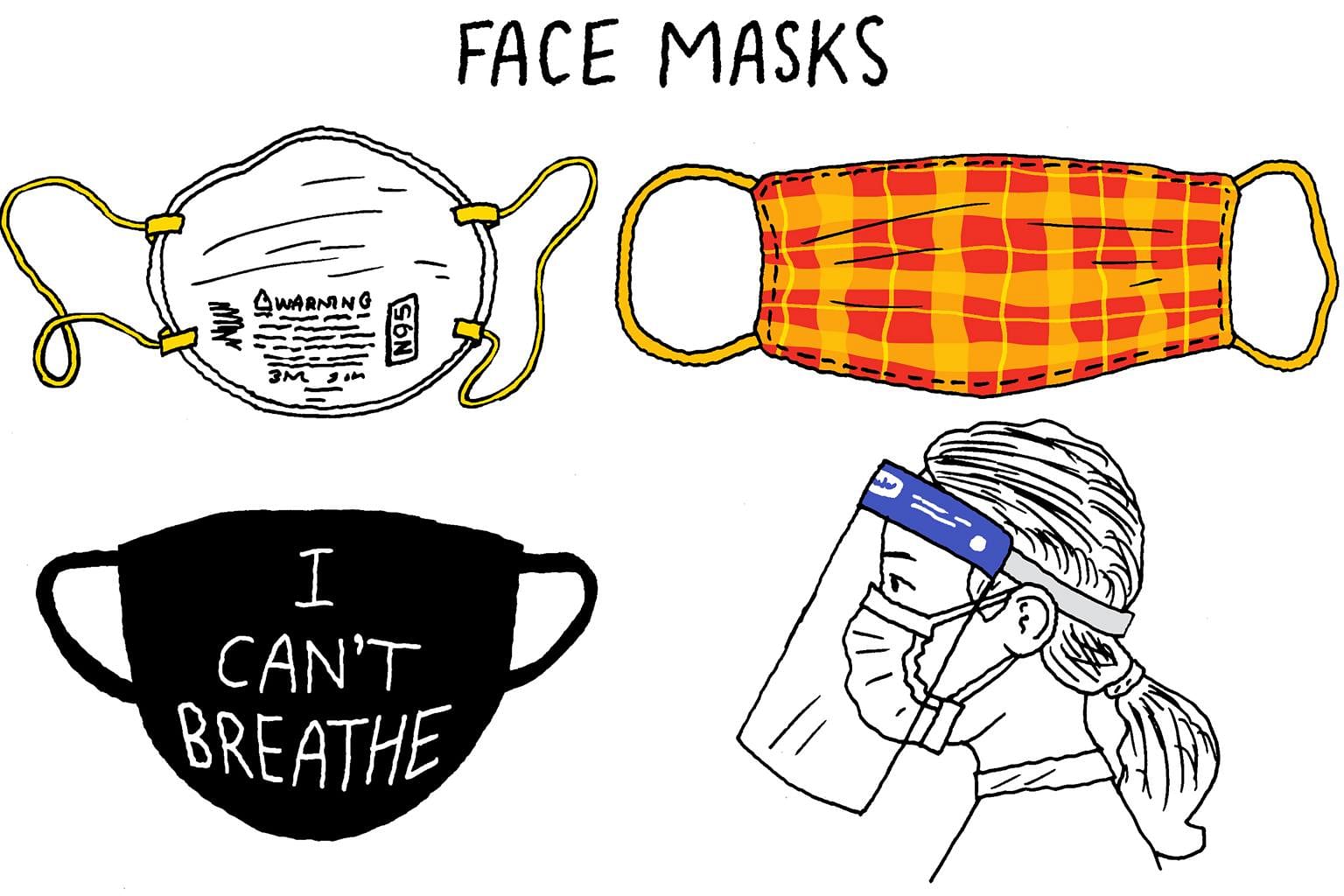NEW YORK (NYTIMES) - A set of new objects has emerged in the last few months to address the new reality of illness, lockdown, social distancing and social protest.
Plastic bubbles that hover over restaurant tables. Rods for contactless lift-button-pushing. Portable seats that attach to lampposts, for shoppers waiting outside crowd-controlled stores. Dresses with skirts that have a 1.8m radius. Podlike enclosures to keep gym-goers separate. A plastic sleeve that enables hugging at nursing homes. Masks in every imaginable form.
Some of these objects are wacky and unrealised - speculative concepts that may never see the light of day. Others, like cocktails-in-a-bag, thermometers and all manner of partitions, are already circulating widely.
And some are not new at all: familiar household items like bottles of Lysol and rolls of toilet paper, which have taken on new meaning and importance because of scarcity or sudden unusual needs.
"I'm thinking a lot about what these objects are going to say about the pandemic in the future," said Ms Anna Talley, a master's student in the history of design at the Victoria and Albert Museum and the Royal College of Art.
Ms Talley and fellow student Fleur Elkerton have compiled an expansive online archive called Design in Quarantine.
Some of these objects are whimsical, or a little ridiculous, like an ultra-large "distancing" crown distributed by a German Burger King in May. Others are the heartbreaking artifacts of illness and mass death, economic collapse and crisis.
"Objects can give us an insight into a time period that documents cannot," said Ms Alexandra Lord, chairman of the medicine and science division at the Smithsonian's National Museum of American History, who is helping to lead the museum's Covid-19 collecting task force.
As at many museums, curators there are engaging in what's called rapid response collecting, trying to gather material and objects even as the crisis unfolds. The nature of the pandemic has made it difficult to gather physical objects, but Ms Lord and her colleagues have solicited ideas and offers from the public. They are trying to determine what will be crucial to future historians and viewers, even as the crisis continues to unfold.
"We as historians like to have hindsight, but we already know certain objects like ventilators will be a crucial part of the story," Ms Lord said.
Masks, too, have become symbols of the crisis in their myriad and already-evolving forms: hand-sewn, N95, high-fashion, reusable, disposable.

At the New-York Historical Society, historians have been collecting since mid-March, trying to gather things that tell a specific story about the city's experience.
They began making a collecting wish list that included signs about store closures in different languages, bottles from distilleries that were converted into bottles for hand sanitisers, and the blanket of a baby born amid the pandemic.
"There's a white polo shirt that the governor tends to wear when he's been doing his daily press briefings," Ms Louise Mirrer, president and chief executive of the New-York Historical Society, said in May, when Governor Andrew Cuomo was doing daily briefings.
"We'd like to have that, and we will ask him for that."
The New-York Historical Society is also seeking objects that illustrate the personal toll of the pandemic - some of which would be difficult to collect now.

"There are some more sensitive objects that we'll ask for later, like artifacts from people who have lost friends and relatives," Ms Mirrer said.
Some ordinary objects have transformed into artifacts, either because of the shadow of loss, or simply because of their newfound importance as the crisis continues to shift.
Some of the early fads of the pandemic may already feel like relics of the past.
"Things from April seem old already," said Ms Donna Braden, senior curator at the Henry Ford Museum. "It was almost easier to identify those iconic objects early on, and now the crisis has become so fragmented and so pervasive."
As historians and curators begin to collect and document, many people have become engaged in a kind of self-archiving: documenting lockdowns and sicknesses, saving newspaper articles and children's art projects, building what amounts to pandemic collections.
"I find it really interesting that people are becoming almost historians of their own lives," Ms Lord said.











